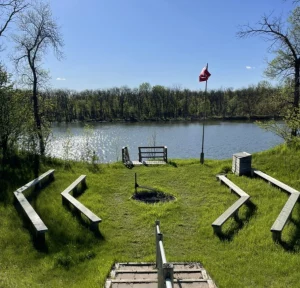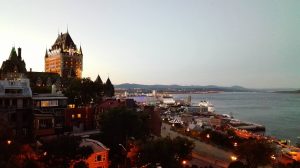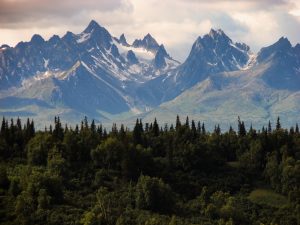Introduction to Torngat Mountains National Park
Along the northernmost tip of Newfoundland and Labrador, where ancient rock formations stand tall against the biting Arctic winds, lies Torngat Mountains National Park—an untamed expanse of natural beauty that remains one of Canada’s most secluded treasures. The park’s name, derived from the Inuktitut language, implies a place of spirits, a testament to its mystical allure. This vast wilderness teems with an array of towering mountains, spectacular fjords, and glaciers that march toward the sea, suggesting a world that time has barely touched. Visiting Torngat Mountains is not merely a journey into a rugged terrain but an expedition into a land that encapsulates Canada’s raw and enigmatic northern frontier.
A serene yet forbidding landscape greets the adventurous who manage to reach this remote sanctuary, which is accessible only by boat, charter planes, or helicopter—a vivid reminder of its untouched and solitary nature. Given its remote location, it challenges even the most seasoned explorers with its harsh conditions and untouched wilderness, one where polar bears roam freely amid the pristine valleys and icy waters that characterize the region.
Historical Context of Torngat Mountains National Park
The Torngat Mountains have been a significant spiritual and cultural site for the Indigenous peoples of Canada, particularly the Inuit and their predecessors, for thousands of years. Artifacts and features in the landscape bear silent witness to the generations of Inuit who have traveled, hunted, and lived in this rugged terrain. The park’s majestic beauty veils the area’s rich history of human resilience and adaptation to one of Earth’s most formidable climates and geographies.
For the Inuit, the mountains and valleys of this land are imbued with the stories and spirits of their ancestors, making it a sacred space. Recognizing both its cultural significance and environmental value, the government of Canada and the Nunatsiavut Government collaborated to establish Torngat Mountains as a national park in 2005. This critical milestone ensured the protection of both the natural splendor and historical heritage of the region for future generations.
The Natural Splendor and Biodiversity of Torngat Mountains National Park
Architecturally speaking, Torngat Mountains National Park isn’t adorned with manmade structures but carved by the very hand of nature itself. The park’s terrain is a stunning array of geological formations – soaring peaks that defy the clouds, sharp escarpments, and deep valleys that are sure to evoke awe in its beholders. The fjords that cut through the landscape act as nature’s cathedral, with cliffs rising dramatically from the depths to create a panorama that dwarfs all those within its embrace.
Within this ragged natural architecture thrives an ecosystem both delicate and fierce. The park is one of the few places in the world where you might witness polar bears hunt on the ice edge, caribou herds traverse ancient migratory routes, and peregrine falcons soar above the windy peaks. The rich marine waters are home to seals, whales, and icebergs that drift silently by – living and moving monuments in their own right that comprise an ineffable part of the park’s natural majesty.
Personal Experiences in Torngat Mountains National Park
For those who venture far enough to experience it, Torngat Mountains offers an adventure like no other. Visitors are invited to mingle with nature in its most primal state—hiking along the footpaths carved by caribou and Inuit over millennia, camping under a sky punctuated by the Northern Lights, and fishing in the streams teeming with Arctic char. The park is not just seen; it is felt—a place where one can taste the freshness of the air, hear the silence that resounds with echoes of distant glaciers calving, and witness a night sky undiluted by the lights of civilization.
Engaging with local Inuit guides provides an invaluable perspective on the land and its stories, adding layers of depth to the personal connections forged within the park. The cultural exchange that happens here is a treasured aspect of the visitor experience, facilitating a profound respect for the indigenous communities that call this place home. Narrative threads of survival, of harmony with nature, and of the inextricable links between land and people are woven into the fabric of every journey through these mountains.
As each visitor comes to face the tangible grandeur and immerse themselves in the elements of the Torngat Mountains, they take part in a continuum—humans drawn to wander, to explore, and to understand parts of our world that remain defiantly wild. The personal narratives that emerge from pilgrimages to this rugged frontier are as varied as the paths through its valleys but shared in their reverence for this untouched corner of the world.
The Torngat Mountains National Park is not static; it evolves with every snowfall, with each summer thaw, and through the continuous narratives of those who travel to witness its splendor. As it transitions from a sacred ground for Indigenous peoples into a beacon for global adventurers, it remains an integral part of Canada’s cultural mosaic—a land steeped in historical importance, ecological wonder, and a testament to the raw beauty of the natural world. Everyone who walks its ancient paths becomes a part of its ongoing story, a story waiting to include you within its timeless chapters. Should you seek an encounter with wilderness in its purest form and wish to weave your own tale in the presence of spirits and spectacles alike, Torngat Mountains beckons.









